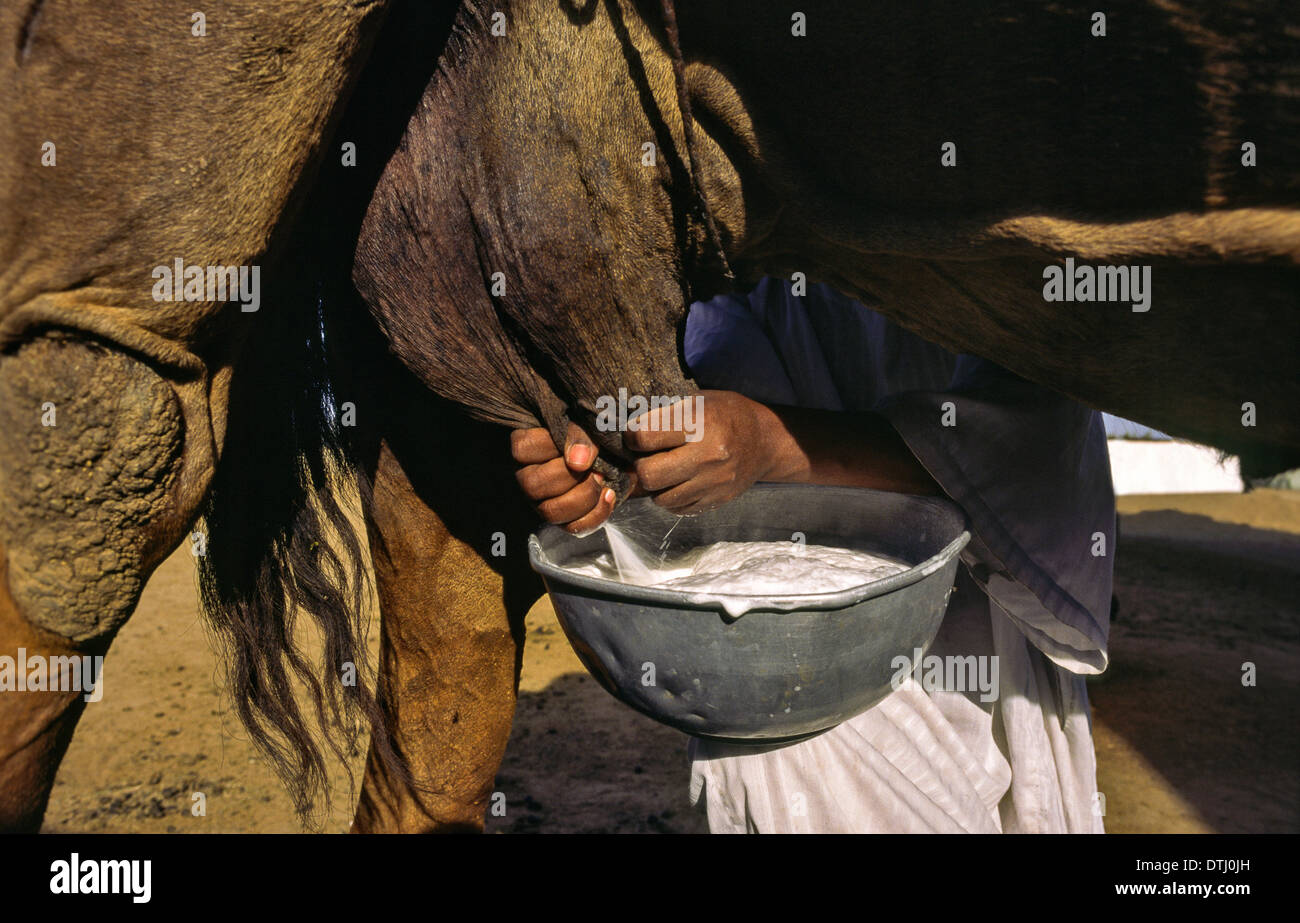HAND MILKING A CAMEL IN SAUDIA ARABIA

Image details
Contributor:
JOHN BRACEGIRDLE / Alamy Stock PhotoImage ID:
DTJ0JHFile size:
25.2 MB (1.4 MB Compressed download)Releases:
Model - no | Property - noDo I need a release?Dimensions:
3704 x 2376 px | 31.4 x 20.1 cm | 12.3 x 7.9 inches | 300dpiDate taken:
25 May 2013Location:
SAUDIA ARABIAMore information:
Camel's milk has supported Bedouin, nomad and pastoral cultures since the domestication of camels millennia ago. Herders may for periods survive solely on the milk when taking the camels on long distances to graze in desert and arid environments. Camel dairy farming is an alternative to cow dairy farming in dry regions of the world where bovine farming consumes large amounts of water and electricity to power air-conditioned halls and cooling sprinkler systems. Camel farming, by utilising a native species well-adapted to arid regions, able to eat salty desert plants, has been linked to de-desertification by UNESCO. Camel milk can be found in supermarkets in the UAE, Saudi Arabia and Mauritania. Camel milk is a rich source of proteins with potential antimicrobial and protective activities; these proteins are not found in cow milk or found only in minor amount. Camel milk has enough nutrients to sustain a person through the day. In many countries, camel milk is given to babies suffering from malnutrition.